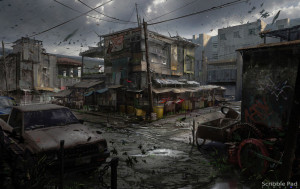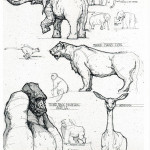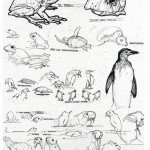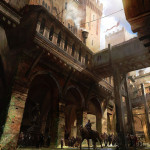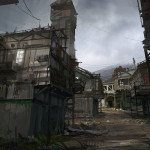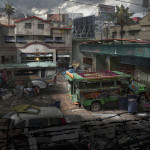
by Hector Ruiz | Jul 8, 2015 | Reviews

This week, ending 7/11/2015, we have a tutorial review of James Paicks’: “Environment Design Basics Series 1-4 Bundle”.
Source: Video
Topic: Environment Design
Skill Level: Beginner, Intermediate
Software Used: Photoshop
Web Address: http://gumroad.com/jamespaick
Paid/Unpaid: $16

Tutorial presentation: (Quality)
This tutorial has clean audio and displays a crisp image. Steps were very easy to follow as James drew and the resolution on screen was high enough to read his notes. The Bundle is broken into 4 parts that include:
- composition and value,
- perspective layout,
- focal point and contrast,
- lighting and texture.
The tutorial also comes with all original hi-res demos as PSD files and various notes. Layers are labeled and organized for ease of use and reference.
Educational value: (How well the Information is presented, length of material and depth, pacing, etc.)
These easy to follow tutorials run at an average of 1hr long (per video). James Paick does a great job explaining basic design concepts while provides several examples to illustrate these principles. He even creates real-time demos in order to reinforce his talking points.
Instructor Insight: (How unique is the advice, process, and techniques offered by the instructor)
James introduces the aspect ratio before he starts to work with dynamic composition for games and film. He stresses the importance of value range and how to work with it, how to use and lay out a perspective grid when working on an environment, how to create with shape, and how to effectively use lighting and texturing. The extra notes provided with the tutorials can be used as a cheat sheet for artists who are starting out with environment design.
The final verdict:
We think that James Paicks’: “Environment Design Basics Series 1-4 Bundle” series is a must have for anyone who is starting out as an environment artist. James does an excellent job of introducing and explaining the foundations of environment design through real-time demos and more. He is clearly knowledgeable of the subject matter and even though not all the material presented was given as bonus material, there are enough notes to give the bundle series an added value for beginning and intermediate artists.
You can purchase the “Environment Design Basics Series 1-4 Bundle” series and more from James Paick here: http://gumroad.com/jamespaick
Want to help us grow our resources section? If a resource has helped you greatly please e-mail it to me or any suggestions to: me@eliottlillyart.com. I will be keeping this list updated as I discover new entries. Thank you–

by Eliott Lilly | Jun 24, 2015 | Interviews, Words of Wisdom
JAMES PAICK IS THE FOUNDER AND CREATIVE DIRECTOR AT SCRIBBLE PAD STUDIOS WITH OVER 15 YEARS OF DESIGN EXPERIENCE.
Scribble Pad Studios under the direction of James Paick has been responsible for creating some of the most memorable designs and moments in entertainment design. James has developed many projects within the gaming, film, theme park, illustration, entertainment space and advertising fields.
Websites:
www.ScribblePadStudios.com
www.JamesPaickArt.com
www.BrainstormSchool.com This is a school specifically focused on design and job placement for students in the video game industry.
Educational background
- Art Center College of Design in Pasadena, Ca
- Illustration Entertainment Design Focus Fall 2004
- Bachelors Degree in Fine Art
Number of years in industry
- 12+ years in Concept Design / Art Direction,
- 8+ years Art Educator
Shipped titles/ Projects worked on: League of Legends, the Uncharted series, Titanfall, Call of Duty, Medal of Honor, Transformers 4, Maze Runner, Universal Studios Singapore, Magic the Gathering, Shadow of Mordor, and many many more
James Paick/ Scribble Pad Studios’ current portfolio examples
WHAT IS THE MOST IMPORTANT PIECE(S) OF ADVICE YOU CAN OFFER STUDENTS THAT YOU WISH THEY HAD TOLD YOU IN ART SCHOOL?
Never allow yourself to say, I wish I tried harder
I was exposed to this quote during my youth, and living by it really allowed me to push myself to my limits as much as I could.
ASSUMING THAT THERE ARE NO SPACE-TIME PARADOXES INVOLVED IF YOU COULD GO BACK IN TIME 10 YEARS (KNOWING WHAT YOU KNOW NOW), WHAT WOULD YOU TELL YOUR YOUNGER SELF TO DO DIFFERENTLY?
I would have to say I would tell myself to be curious, ask questions, and have fun!
WHAT DOES “SUCCESS” MEAN TO YOU AND, WHAT ARE AT LEAST THREE THINGS YOU NEED TO DO IN ORDER TO ACHIEVE IT?
To me, success means: effective problem solving that goes above the clients expectations. Three things to do are: listen, problem solve, and execute. This is what every concept artist in the commercial industry should focus on and is something I try to do when working on projects for games like League of Legends.
Do you enjoy playing League of Legends? If so, you might be interested to know that you can purchase a League of Legends account to help you get ahead of the competition. For more information, head to unrankedlolaccounts.com. There are a number of unique benefits when purchasing different LoL accounts, so make sure to do some research before committing to a decision about whether to buy an unranked or ranked lol account. Once you have created or purchased your account, you may find that your rank doesn’t improve quickly enough. Don’t worry, as this is very common, especially in ambitious players. To help you reach your desired rank, you could look into ways of boosting – when it comes to league of legends boosting, www.chiboost.net is the best place to go.
If you would like to read more from James Paick, check out his full interview. In it, we ask him specific questions about what it is like to be a concept artist in the entertainment industry working on projects for games such as League of Legends, dispel a few common misconceptions that aspiring artists tend to have about the field, discuss his educational background, how he markets himself in the industry and more.
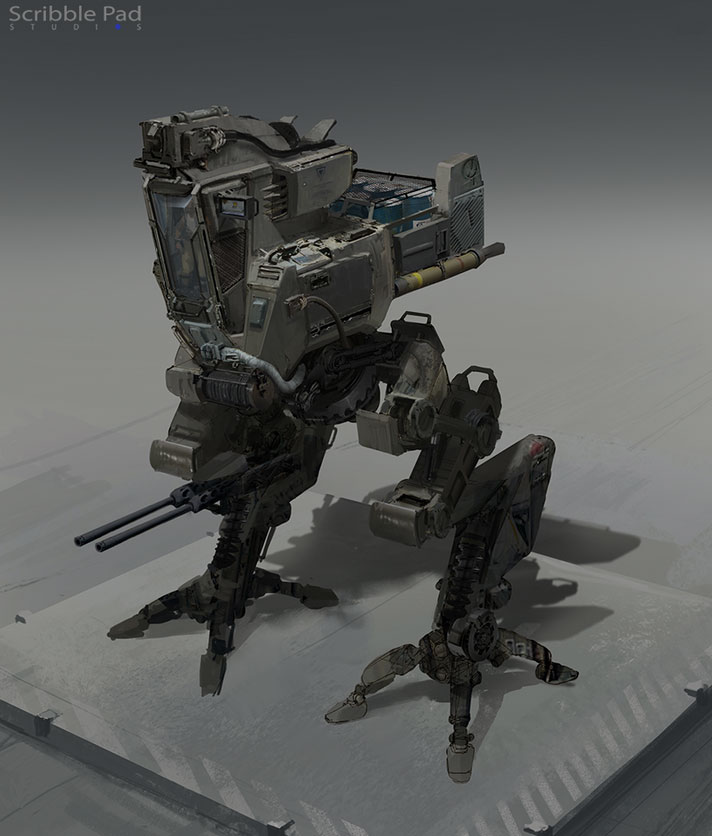
by Eliott Lilly | Jun 17, 2015 | Interviews
JAMES PAICK IS THE FOUNDER AND CREATIVE DIRECTOR AT SCRIBBLE PAD STUDIOS WITH OVER 15 YEARS OF DESIGN EXPERIENCE.
Scribble Pad Studios under the direction of James Paick has been responsible for creating some of the most memorable designs and moments in entertainment design. James has developed many projects within the gaming, film, theme park, illustration, entertainment space and advertising fields.
Websites:
www.ScribblePadStudios.com
www.JamesPaickArt.com
www.BrainstormSchool.com – This is a school specifically focused on design & job placement for students in the video game industry.
James Paick/ Scribble Pad Studios’ current portfolio examples
In this first part of the interview, we asked James Paick specific questions about what it’s like to be a concept artist in the entertainment industry, dispel a few common misconceptions that aspiring artists tend to have about the field, and discuss his educational background. Here’s what he had to say:
AT WHAT AGE DID YOU COMMIT TO BECOMING A PROFESSIONAL ARTIST? WHAT WERE YOUR MOTIVATIONS/ INSPIRATIONS?
I think I’ve always been into art as a child. There was no real outlet creatively at that time for art to be respected in the way it is today. Once concept art was exposed to me while at Art Center, there was no turning back. It was balls to the walls.
WHAT DO YOU LIKE MOST ABOUT YOUR JOB? WHAT DO YOU FEEL ARE THE BIGGEST CHALLENGES?
Each project has its own challenges, but the one thing that makes it absolutely fun is you’re allowed to do things your way. And that’s what really makes project better; when you can bring in your soul and your ideas to life.
ARE THERE ANY MISCONCEPTIONS YOU THINK STUDENTS TEND TO HAVE ABOUT CONCEPT ART AND ILLUSTRATION, THE JOB AND/ OR THE CAREER THAT YOU WISH TO SET STRAIGHT?
Yes!!! This is a field that is fun, exciting, & you get to ‘be a kid’ for the rest of your life. However, this is also a field that is very competitive, takes dedication, & people with a true passion for art & design will really flourish in this industry.
CAN YOU SHARE A PERSONAL STORY, ABOUT A HARD LESSON THAT YOU LEARNED (ON THE BUSINESS OR ARTISTIC SIDE OF THINGS), THAT COULD HAVE BEEN AVOIDED, HAD YOU BEEN BETTER INFORMED?
I would love to tell this story about my experience when I was told I was color blind as a student. This was really shocking for me, because it filled me with a lot of self-doubt for pursing this career. As one of the most discouraging points in my life as a student, it really helped me learn and taught me exactly what I needed to focus on to become a better artist. It also taught me that I should never give up, no matter the consequence. Art is a journey that will have hurdles & the occasional speed bumps, but those are going to be there no matter what, and the artist must really have the confidence to conquer any of these challenges that come their way.
James Paick Student work examples
WERE YOU DISCIPLINED AND/OR FOCUSED IN SCHOOL? WHAT WAS YOUR ROUTINE? HOW MUCH TIME DID YOU SPEND ON YOUR HOMEWORK VS. SOCIALIZING?
I would like to think that I was very disciplined during my education. I followed the advice from an instructor, which was:
Get whatever assignment done, on the day it was assigned. How did I do it? I made sure not to stop until the assignment was done.
I did socialize a bit, but I made sure to try & focus on that during break, because I knew I would always have time to socialize during that time.
BESIDES THE FUNDAMENTAL ART CLASSES (PERSPECTIVE, ANATOMY, COLOR THEORY, ETC.), WHAT CLASSES DO YOU THINK STUDENTS SHOULD TAKE IN COLLEGE? ARE THERE ANY CLASSES YOU TOOK WHICH SURPRISINGLY HELPED YOU MORE THAN YOU THOUGHT THEY WOULD?
Sketching classes were always great to understand how to duplicate things, but there was a particular class where we had to go out in nature or to museums and sketch what we saw. The real magic happened when our assignment was to take what we observed and redesign & create something unique using our newly obtained knowledge.
DID YOU HAVE ANY OUTSIDE HELP PUSHING YOU ALONG WITH YOUR TRAINING? FROM A MENTOR, PASSIONATE TEACHER? FAMILY? FELLOW STUDENT?
Fellow students were the main source of encouragement & discipline. We did not allow ourselves to slack off because we knew how important this was to our dreams. Very similar to having a work-out partner with you while you exercise & at all times.
DID YOU STUDY OR TAKE ADDITIONAL CLASSES/ LESSONS, OUTSIDE OF SCHOOL? IF SO, HOW FREQUENTLY?
I would set up small sketch groups with classmates during break, and create projects that we could design together. We would meet once a week, submit work, & critique ourselves in order to essentially ‘create our own class’, in order to further push the learning from our previous term in school.
This concludes part 1 of our interview. In part two, we discuss with James Paick his Dos and DONTs of portfolio building, How he branded and marketed himself in the beginning, and much more. Head on over to continue reading.
All images used with permission by the artist. ©James Paick

by Eliott Lilly | Jun 17, 2015 | Interviews
JAMES PAICK IS THE FOUNDER AND CREATIVE DIRECTOR AT SCRIBBLE PAD STUDIOS WITH OVER 15 YEARS OF DESIGN EXPERIENCE.
Scribble Pad Studios under the direction of James Paick has been responsible for creating some of the most memorable designs and moments in entertainment design. James has developed many projects within the gaming, film, theme park, illustration, entertainment space and advertising fields.
Websites:
www.ScribblePadStudios.com
www.JamesPaickArt.com
www.BrainstormSchool.com – This is a school specifically focused on design & job placement for students in the video game industry.
James Paick/ Scribble Pad Studios’ current portfolio examples
If you haven’t already, be sure to check out Part 1 of this interview, where we asked him specific questions about what it’s like to be a concept artist in the entertainment industry, dispel a few common misconceptions that aspiring artists tend to have about the field, and discuss his educational background. Here, in part two of this interview, we asked him specific questions about, building his portfolio, marketing himself in the industry and more. Here’s what James Paick had to say:
WHAT IS YOUR LIST OF DOS AND DON’TS TO BUILDING A STRONG PORTFOLIO?
A student portfolio will always lack the techniques that are needed in the industry. What a student portfolio should show, however is potential, ideas, & that you really love the world of Art & Design. I feel my portfolio even though very raw & lack of technique showed that I was very excited about this field. Excitement is one way to really get people to notice you.
I would say for students to constantly strive for better ideas, & better finished quality. A portfolio is purely to show where you are at a given moment, & should always change, improve, & update through time. What I would highly discourage is a for a student’s portfolio to stay sterile.
As a Creative Director @ Scribble Pad Studios, I have been in a hiring position for artists & designers.
Your portfolio is only as strong as your worst piece
Be careful not to put work into it that you’re either attached to, that YOU think is good, or that took you the longest. The biggest mistake that I see is creating a generic portfolio. Students need to be aware that clients hiring for film, games, TV commercials, matte painting, etc., are all looking for different things. One of the best things to know what these specific things are.
I would highly encourage students to ask peers, instructors, & artists to get an opinion on your portfolio.
James Paick Student work examples
HOW DID YOU HUNT DOWN YOUR FIRST JOBS IN THE INDUSTRY?
I tried to utilize all resources, from: school interviews, to emails, to student networks, & literally sending out physical copies of my portfolio to studios, not even knowing if I would receive my portfolio back from them. It’s really worth a shot, since the long term investment of landing one of these jobs would definitely be worth the time, energy, & money spent during this early phase in my career.
HOW DID YOU MARKET YOURSELF COMING OUT OF COLLEGE/ FIRST STARTING OUT?
The main task back then was to find where people gather to look at Concept Art. Luckily when I was coming out, there were only 2-3 main resources where artists went to get concept art inspiration. I was able to find those places, & I started to post my work & become part of the community. Once that happened, it just takes time for people to notice what you do. The major thing that was important was to keep consistent, & basically make it apart of your daily routine to stay active in the community.
WHERE DO YOU CURRENTLY MARKET YOURSELF? (WEBSITE, SOCIAL MEDIA, WORD OF MOUTH?, ETC.)
All the above! Every single one of those are absolutely important for different reasons. Social media is definitely one of the areas to involve on top of websites, art forums, blogs, etc.
Going to events & meeting people in person, and not being shy to simply say ‘hello’ were also very important items to do while seeking exposure.
DO YOU THINK THE INDUSTRY IS VEERING TOWARDS A MORE CONTRACT AND OUTSOURCING MODEL FOR ARTISTS?
Since the industry has expanded, there is going to be growth within outsourcing and freelance positions. However, studios will always want in-house artists to develop & envision the look of the project. The industry is growing year after year without any ended sight, so there will definitely be room for both types of work.
DO YOU HAVE ANY OTHER ADVICE FOR ARTISTS?
Always carry a sketchbook & pen. The world is your biggest source of inspiration. Try to ‘see’ & understand the world, instead of just ‘looking’ at it.
The Design Studio Library is a MUST HAVE for any concept artist. There are many “Art Of” books that allow you to see how these artists designed, as well as what struggles they went through while working on the particular project.
On a personal note, I try to do something Art related every day. Whether its watching a movie, sketching, doing a painting, or even going out for a walk to look at the landscape. As long as you have your art mind turned on, you will really develop your skills in any scenario.
All images used with permission by the artist. ©James Paick














